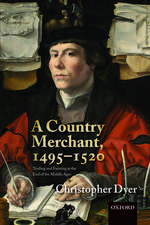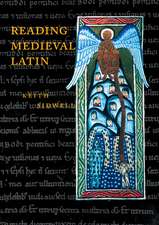Making History Count: A Primer in Quantitative Methods for Historians
Autor Charles H. Feinstein, Mark Thomasen Limba Engleză Paperback – 28 aug 2002
Preț: 479.51 lei
Preț vechi: 538.78 lei
-11% Nou
Puncte Express: 719
Preț estimativ în valută:
91.75€ • 96.06$ • 75.92£
91.75€ • 96.06$ • 75.92£
Carte tipărită la comandă
Livrare economică 05-19 aprilie
Preluare comenzi: 021 569.72.76
Specificații
ISBN-13: 9780521001373
ISBN-10: 0521001374
Pagini: 572
Ilustrații: 1 table
Dimensiuni: 178 x 256 x 40 mm
Greutate: 0.9 kg
Ediția:New.
Editura: Cambridge University Press
Colecția Cambridge University Press
Locul publicării:Cambridge, United Kingdom
ISBN-10: 0521001374
Pagini: 572
Ilustrații: 1 table
Dimensiuni: 178 x 256 x 40 mm
Greutate: 0.9 kg
Ediția:New.
Editura: Cambridge University Press
Colecția Cambridge University Press
Locul publicării:Cambridge, United Kingdom
Public țintă
Academic/professional/technical: Research and professionalCuprins
Part I. Elementary Statistical Analysis: 1. Introduction; 2. Descriptive statistics; 3. Correlation; 4. Simple linear regression; Part II. Samples and Inductive Statistics: 5. Standard errors and confidence intervals; 6. Hypothesis testing; 7. Non-parametric tests; Part III. Multiple Linear Regression: 8. Multiple relationships; 9. The classical linear regression model; 10. Dummy variables and lagged values; Part IV. Further Topics in Regression Analysis: 11. Violating the assumptions of the classical model; 12. Non-linear models and functional forms; 13. Logit, probit, and tobit models; Part V. Specifying and Interpreting Models: Four Case Studies: 14. Case studies 1 and 2: unemployment in Britain and emigration from Ireland; 15. Case studies 3 and 4: the Old Poor Law in England and leaving home in the United States, 1850–60; Appendix A. The four data sets; Appendix B. Index numbers; Index.
Recenzii
'This is an excellent book which serves two purposes. It fills a much needed gap in the literature for the historian who isn't particularly happy in handling numerical data. it also benefits other students who require a passing knowledge of statistics. nothing to my knowledge, has come on the market since Maroney's Facts from Figures in the 1950s provides such an extensive insight into statistical methodology.' Open History
'No competitor text is as effective … I wish this text had been available when I was trying to teach quantitative methods.' The Times Higher Education Supplement
'… this is a very impressive, an d very welcome, book. Feinstein and Thomas are to be congratulated for producing a comprehensive, nontechnical introduction to quantitative methods for historians which I am sure will soon be compulsory reading on every course catering to such an audience.' Business History
'… no competitor text is, to my knowledge, as effective in taking the student from the basics of descriptive statistics through to the intricacies of multiple linear regression … I wish this text had been available when I was trying to teach quantitative methods to numerically challenged historians…'. The Times Higher Education Supplement
'No competitor text is as effective … I wish this text had been available when I was trying to teach quantitative methods.' The Times Higher Education Supplement
'… this is a very impressive, an d very welcome, book. Feinstein and Thomas are to be congratulated for producing a comprehensive, nontechnical introduction to quantitative methods for historians which I am sure will soon be compulsory reading on every course catering to such an audience.' Business History
'… no competitor text is, to my knowledge, as effective in taking the student from the basics of descriptive statistics through to the intricacies of multiple linear regression … I wish this text had been available when I was trying to teach quantitative methods to numerically challenged historians…'. The Times Higher Education Supplement
Descriere
This authoritative guide to quantitative methods is designed to be used as the basic text for taught graduate courses, and upper-level students working on their own. Illustrated with tables, graphs and diagrams, it introduces key topics, and supported by five specific historical data-sets, available electronically in downloadable and manipulatable form.






























